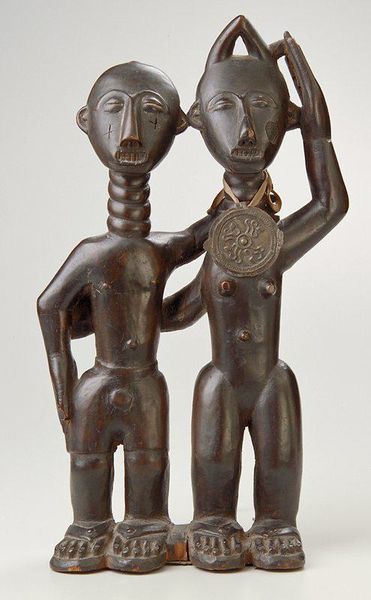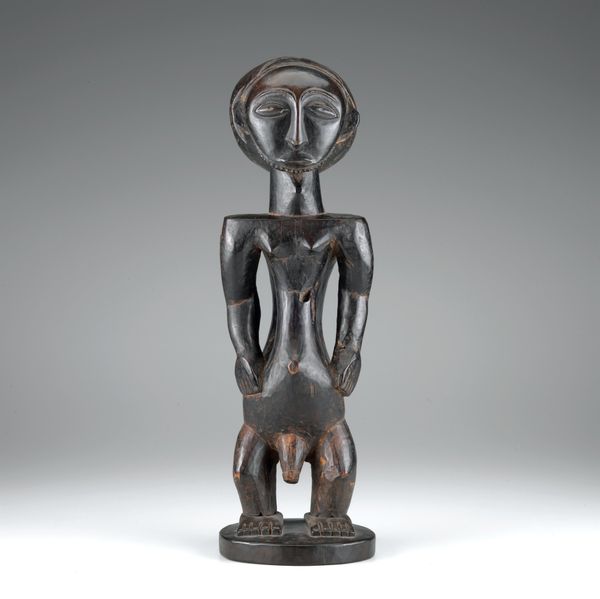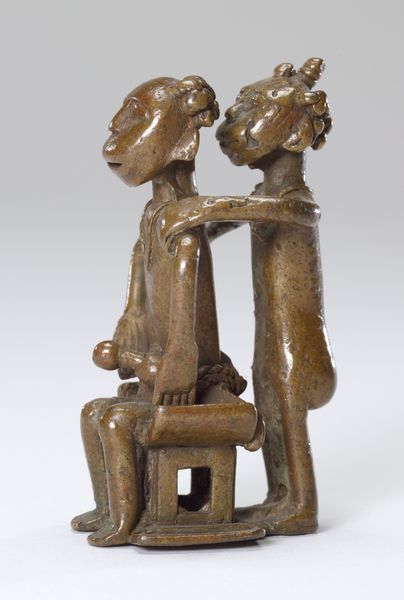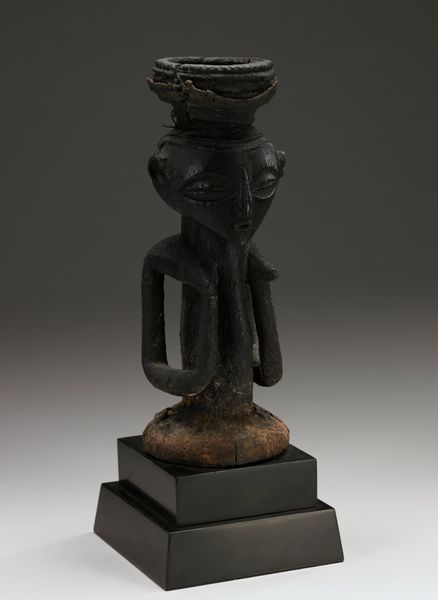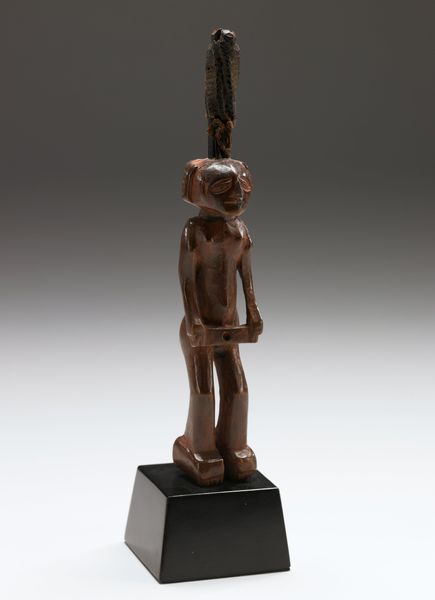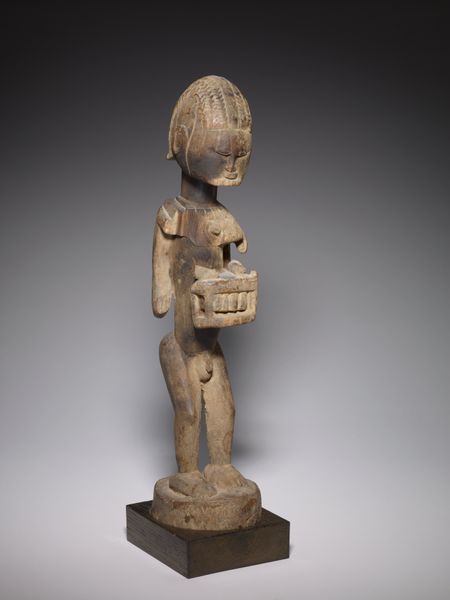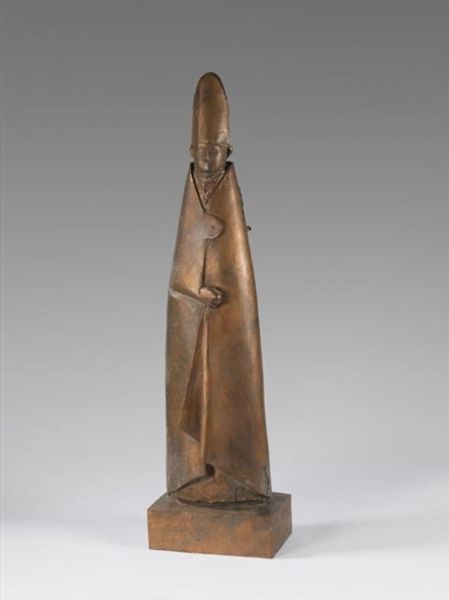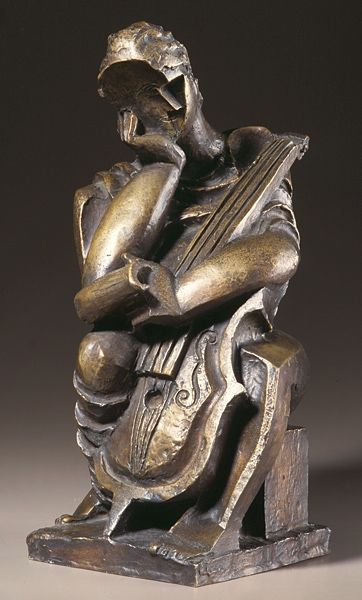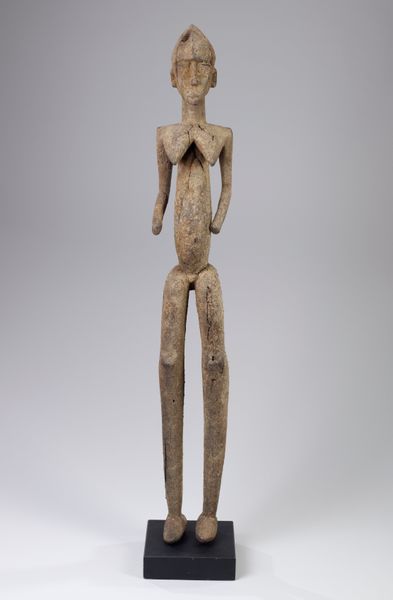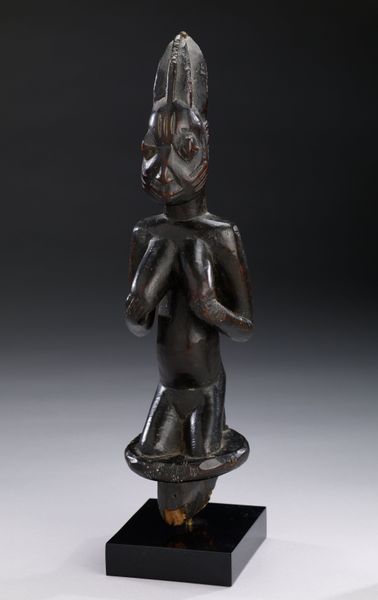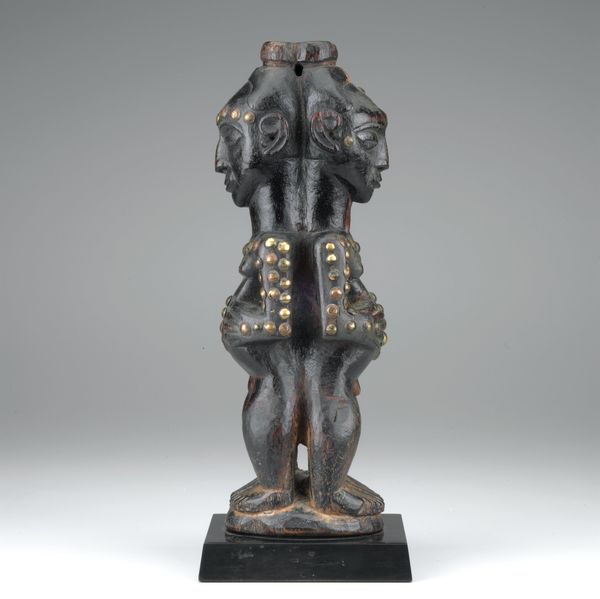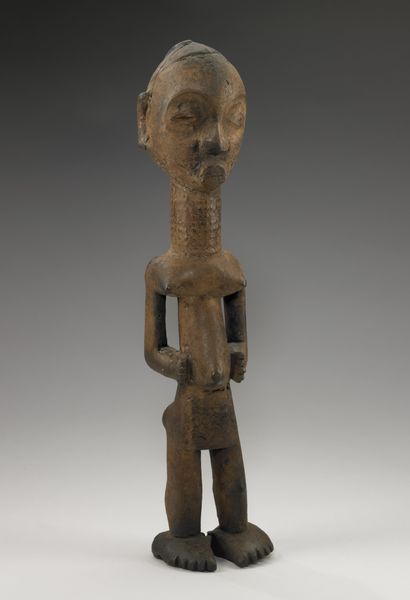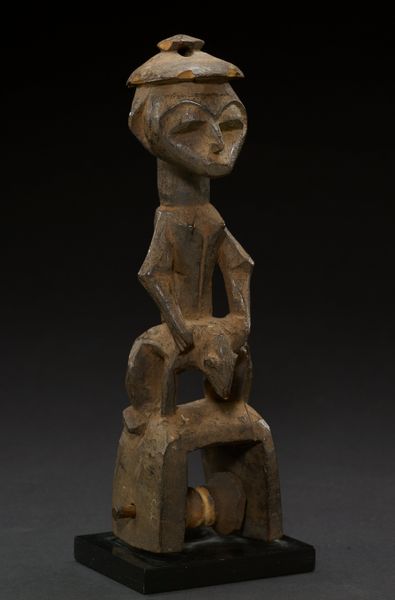
carving, sculpture, wood
#
african-art
#
carving
#
sculpture
#
figuration
#
sculpting
#
sculpture
#
men
#
wood
Dimensions: H. 28 3/4 × W. 8 5/8 × D. 8 in. (73 × 21.9 × 20.3 cm)
Copyright: Public Domain
Curator: We're standing before "Figure: Seated Couple," a wooden carving created by a Dogon artist sometime between 1720 and 1820. It’s part of the Metropolitan Museum of Art's collection. Editor: My first impression? Quiet strength. They look weathered, yet there's a powerful intimacy between these two figures seated side by side on this small stool. Curator: Exactly. The sculpture’s societal context is crucial. Dogon art often serves religious and ritualistic purposes, frequently representing ancestors or deities. Seated couples like this one are often associated with fertility and the continuity of lineage, emblems of societal structure. Editor: So, we’re not just looking at an artistic rendering of a man and a woman; this sculpture likely embodies deeper social meanings about family, lineage, and perhaps even power structures within the Dogon community. Look at the woman's arm around the man—it speaks to support and interdependence. What do we know about gender dynamics at the time this sculpture was carved? Curator: Gender roles within Dogon society were distinct, with men typically involved in agriculture and leadership, and women playing vital roles in family care, trade, and sometimes, religious activities. This posture can also speak to balance. The pairing of figures may mirror that desired societal accord. Editor: Interdependence indeed. But let's also address how the Western gaze has historically interpreted and displayed African art. These objects were often removed from their original contexts and placed within museum settings where they could reinforce colonial narratives of primitivism and exoticism. Are there ongoing conversations about decolonizing the Met’s collections of Dogon Art? Curator: Absolutely. Museums today are actively grappling with these issues, re-evaluating the provenance of objects and working more collaboratively with communities of origin to ensure that cultural heritage is represented accurately and ethically. This sculpture now stands as a reminder of colonial legacy, prompting important dialogue regarding how we represent these artworks. Editor: Right. By acknowledging this difficult legacy, and interrogating what it means to center indigenous voices, museums like the Met can make better strides to educate on and unpack challenging aspects of its collection. Ultimately, the "Figure: Seated Couple" offers us not only artistic merit but prompts us to grapple with complex social issues tied to gender, power, colonialism, and ethics. Curator: A reminder of how intertwined art, history, and social structures really are.
Comments
No comments
Be the first to comment and join the conversation on the ultimate creative platform.
